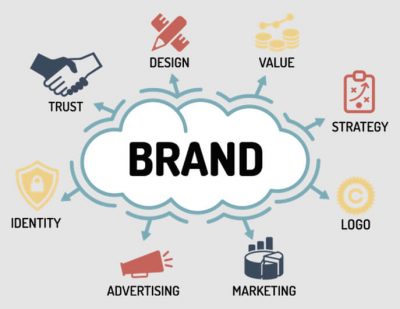7 Ways To Improve Trucking Brand Image
Trucking brand image is something just about everyone in the industry wants to improve, but it’s a moving target, a never-ending battle.
“A lot of times we go to Truckload Carriers Association or American Trucking Associations meetings, and we’re very involved in committees on things like highway policy and government regulations, those tangible things,” says Dennis Dellinger, president of North Carolina-based Cargo Transporters Inc. and co-chair of TCA’s brand image committee. “CEOs, VPs, COOs, they like something they can take home and measure,” he says. “It’s hard to do that with brand image. To change a mindset takes a long time.”
Nevertheless, Elisabeth Barna, vice president of outreach at ATA, reports an increase in the number of requests for talking points and for industry and safety statistics. “I think people are more engaged now than they ever have been.”
We’ve come up with the following seven ways you can work to improve the brand image of trucking – and of your fleet:
1. Get Involved in Your Community
“There are so many opportunities at the local grass roots level to change trucking brand image,” Barna says.
Groups such as rotary clubs or chambers of commerce, for instance, are always looking for speakers, she says, recommending you bring a truck and get people up in the cab.
Trucks are also great to enter in parades and exhibit at local events. Cargo Transporters does just that with its two patriotically decorated Freightliner Rolling Thunder Ride of Pride trucks, displaying them at truck shows, driving them in parades, taking them to school events and granting requests to have them at Harley dealer events.
“Most of our neighbors don’t understand what we do,” says Aaron Tennant, president and CEO of Iowa-based open deck carrier Tennant Truck Lines. “When we explain it to them, they get excited, and they start talking to somebody else.”
Tennant talks to junior high and high school students about opportunities in the industry. It’s not too early to start in preschool, he says, pointing out that there’s no real equivalent of the beloved Thomas the Tank Engine for trucks.
“I took a couple trucks up to my son’s preschool and took them coloring books,” he says. “The kids loved it, they talked about it for weeks.”
Dellinger says he didn’t realize the impact school visits had until a new driver told him, “Ever since you had a truck at my 6th grade class, I’ve wanted to drive a truck.”
2. Tout Your Good Deeds
Many trucking companies actively work to help charitable organizations, either in their communities or on a national basis.
For instance, Indiana-based Baylor Trucking is very involved in Breast Cancer Awareness Month, with special company events raising money that goes both to the national Susan G. Komen for the Cure breast cancer awareness and research efforts, as well as to a local hospital to buy wigs for breast cancer survivors. There are raffles to raise money and days when employees can donate money to be allowed to wear jeans.
Another favorite Baylor charity is a local home for children who have been separated from their families. The company uses its relationship with customer Toys ‘R’ Us to get a few of the hottest toys each holiday season to raffle off and raise money for the home.
3. Reach Out to the Government
Government officials, from the town hall to Capitol Hill, get their brand image of trucking partly from their constituents and partly from their own experience.
ATA organizes a Call on Washington program, where state associations bring in members and non-members to DC to get briefed on legislative issues and meet with their local representatives.
Barna encourages trucking companies to extend personal invitations for government officials to visit fleet facilities.
“There’s no better way to educate members of Congress or their staff, than to invite them out to your facility and get them up in the cab of a truck, whether it’s for 15 minutes or an hour or more,” she says.
4. Take Advantage of Existing Programs
There are a number of programs that help trucking brand image, such as the ATA’s America’s Road Team and Share the Road programs, TCA’s Highway Angels program, Goodyear’s Highway Hero, Trucker Buddy and more.
For instance, National Truck Driver Appreciation Week is not only about showing drivers you appreciate them – it’s also about reaching out to the larger community and to the media to explain why drivers are worthy of appreciation.
Wreaths Across America is another program that is gaining participation. This non-profit organization coordinates wreath-laying ceremonies each December at Arlington National Cemetery and nearly 800 additional veteran cemeteries and memorials. Fleets have been donating trucks and drivers to transport the wreaths for years, and this fall, TCA is working with WAA to coordinate wreath delivery logistics.
Two years ago, TCA created a moving TV ad about trucking and Wreaths Across America, and is encouraging members to buy airtime to run it in their local communities. Last year, more than a dozen fleets did so, and TCA estimates the ads reached 1.5 million people.
5. Show Your ‘Green’ Credentials
You may be buying new clean-die-sel trucks, testing natural gas engines or adding aero improvers because it’ll save money on fuel in the long run, or because government regulators or shippers are demanding it, but being environmentally friendly is also a brand image building opportunity.
“Our industry is safer and cleaner than ever,” says Cari Baylor, vice president of Baylor Trucking. “I loved the recent University of California study about chargrilled hamburgers putting out more air pollution than diesel trucks.”
She says the company uses information from sources such as ATA and OEMs to show reporters, shippers and government officials how truckers are investing in sustainability.
A couple of years ago, she says, a shipper called her to complain that the company’s trucks were idling in its yard despite a no-idling policy. Baylor’s explanation of how EPA 2010 trucks are actually putting out cleaner air than they’re taking in caused the shipper to change its policy.
6. Be Proactive with the Media
When you have a good story to tell, whether it’s winning a safety competition, raising money for a local charity, or having a driver named to the state or national Road Team, be sure to reach out to the local media.
“Local papers eat that stuff up,” says ATA’s Barna. For instance, she says, when Washington state recently had a woman driver win its truck driving championship, “She was on every local station out there.”
If possible, get reporters into a truck for a more compelling experience – and great photo and video ops.
Baylor Trucking worked with a Cincinnati-based TV station to put together a segment on infrastructure. Cameras mounted on Baylor trucks Showed the reality of driving on construction-heavy 1-75. The reporter also got a tour of high-tech goodies such as electronic logs, lane departure warnings and tire pressure warnings.
Many trucking company executives are hesitant to talk to the media, fearful of mangled quotes and “gotcha” journalism. One who’s not is Kevin Burch, president of Jet Express Inc. in Dayton, Ohio.
“It’s all about communication, and I like to communicate with the media,” he says. “If you don’t, you get yourself in a box, and when you do have a story to tell, they won’t listen.”
Saying “no comment” when the media comes calling just makes you look bad, he says.
“When you keep the media informed, they call YOU for advice,” Burch says, whether it’s to ask about a truck wreck, a dangerous local intersection, high fuel prices or the driver shortage.
“It gives me the opportunity to turn a negative into a positive, to tell them we’re going more miles with less fatalities. We have a story to tell on safety.”
That’s not to say you don’t need to be careful about what you say. Burch recommends role-playing. Get someone to pretend to be the journalist and throw tough questions at you.
“Keep your points very simple,” recommends ATA’s Barna. “Talk about the essentiality of the industry and the safety record. Especially bring home the point that without trucks, you would not have the medicine at the hospital you need or the groceries in the grocery store; your kids wouldn’t have their soccer balls or ice skates.”
As Cari Baylor says, “These men and women are missing the soccer games for their kids to make sure the soccer balls are delivered.”
If you quote statistics, make sure you have a good source for them, such as the ATA. Incorrect or misleading numbers may just make you look bad.
If a TV, radio station or newspaper calls about something negative, Barna says, “You still need to talk with the reporter. It may not be exactly what you want to tell them, but if you’re honest with them, they may use you later down the road.'”
And if you don’t talk to them, you can be sure that someone else – a truck-accident attorney, a safety advocacy group, a random driver found at a truckstop – will.
7. Improve First Impressions
All the positive press a person sees can be wiped out by a single negative one-on-one experience.
Keep equipment clean and in good repair. Do trucks have any accessories or add-ons that can be perceived as negative, such as naked-lady chrome mudfiap decorations? Make sure drivers’ personal appearance and actions show respect for themselves, fellow drivers and motorists.
At Tennant, drivers get the message from the top down, through operations and their fleet managers.
“They know how important brand image is, and that we won’t tolerate a poor appearance,” Aaron Tennant says.
The company put shower rooms and a laundry room in its new facility for drivers, and there’s a truck wash as well. The company offers low-cost uniform options for those who want to take advantage of them.
Aaron Tennant says the industry also needs to look at the root of the problem: If drivers don’t have respect for themselves, it’s going to be hard to get the general public to respect them.
“We’ve had a lot of bad apples out there, and now we’ve got to clean it up, put safety first and brand image a very close second.”
There are many existing brand-image-related programs you can get involved in, including the following. Check with your state trucking association, as well.
Brand Image is the impression of your brand in the customer’s mind that should evoke certain ideas and emotions.

Brand image
Brand image building is a multistage and multifaceted process. It consists of many elements such as the system of values, missions and objectives. Brand Image is the language of communication or corporate identity system. Our aim is to help you distinguish your brand from the competition, emphasize your uniqueness and win over new customers.
In the whole branding process, a certain brand impression is developed. It will be shared in order to evoke particular associations and emotions as well as boost brand recognition.

Solutions
Development of the brand image is the very first step every company will face. The proper promotion is required: the rise of brand awareness among recipients, the improvement in the brand’s reach, attractiveness, credibility by using carefully selected marketing tools.
Brand Image building
What is Brand Image building?
Brand image building is a long-term process of influencing the surroundings – creating and influencing personal and media image, to the direction that supports the objectives, visual style and overall brand image of a company, product or personality. A positive brand image supports the sales and marketing effort and wins new customers.
Who are We?
LazrTek is a technologically advanced, “green cleaning”, full service mobile Truck & Equipment washing and detailing company. From your headquarters to the field equipment your customers see on a daily basis, a clean and well maintained product is important for the brand image you seek to present and to the productivity and morale of your employees who interface with the customer. Intense Brand Image is critical for the professional image of your company to present organized, well cleaned trucks and equipment.
At LazrTek we intensify your Image by keeping your trucks and equipment sparkling clean economically and seamlessly. We have a keen eye for details and industry leading reliability and 24 hour support to ensure your image is always intensely at its best. Clean equipment also exudes Quality and protects your investment.
Importance of Image Building
Don’t fall into the trap of assuming your Company has a certain image. Sometimes, there can be a dissonance between how you perceive your image and how others perceive you to be

Think of your image as your currency. Your image is like an intangible currency that you earn over a period of time. How you conduct yourself directly or indirectly has a credit or debit effect on your ‘image bank account’. Do not underestimate the importance of perception. Everything you say, everything you do, how you walk, whether you walk the talk – all go a long way in building a perception in people’s mind about you. Also be aware of your surrounding and the company you keep. This comes as no surprise but you are judged by the company you keep.

At the core of building a good image, don’t forget to be yourself yet be conscious of yourself – what you say and what your body language is in the presence of others counts for a lot. The keyword here is authenticity. Be who you are in whatever you do.
Moreover, don’t fall into the trap of assuming you have a certain image. Sometimes, there can be a dissonance between how you perceive your image and how others perceive you to be. Be wary of this. People are always watching, judging and perceiving whether you are in a formal environment or in a social set up.
In today’s world more than ever with social networks having emerged as indispensable means to communicate, how you project yourself online becomes very important considering people can judge you more easily. What you say online stays there forever. Your image in the minds of others is fluid, ever so susceptible to a reassessment. So see yourself as others would see you.

A positive image reflects a sense of integrity, trust and credibility. These are valuable assets for you – assets you never know when you’ll need to fall back on. You can leverage your image in business or in life. So how can you help build a positive image for yourself? Make an effort to have a positive outlook in life. Allow your inner self-esteem and confidence to reflect through your personality. This is significant in guiding you as you navigate through each day, day after day. Walk the talk. Live true to your words. Learn and grow. Be open to feedback, and work on it.

Study their mannerisms. Be a good listener. Dress for success. Respect punctuality. Help people. Keep your promises. Build relationships before you need them. Be engaged and involved in the community. Aim to inspire others.

A robust personal image has the ability to impact several aspects of your business positively – your success (financial or otherwise), your relationships and even the health of your workers. It takes the investment of time, effort and energy to build an image, but it’s so fragile a currency, it can crash in a matter of seconds. Your image precedes you. It is your identity. Respect it and guard it. You leave behind only your legacy, so make sure it’s rock solid.

Clean, detailed, well maintained equipment goes a long way to ensure a postive brand image. In fact clean equipment maintains its value and experiences less breakdowns than dirty, poorly maintained equipment. The pride of ownership and intensified brand image is easy to see. Even the equipment jumps for joy when it is clean!!
Keeping a semi-truck clean is an important job. When truckers spend so much time on the road, they have little cleaning time, and they live in a fairly limited space. … Image of a clean truck speaks professionalism. Additionally, it vastly increases your trucks’ future resale values. Once again, even the trucks jump for joy when they are clean!
Net Promoter Score (NPS)
At LAZRTEK, our goal is to help our clients intensify brand image and continue their efforts to transform themselves into customer-centric organizations by playing a valuable role in delivering ever more frequent Promoter-creating customer experiences, which in turn, drives accelerated economic success. But it’s possible to focus too much on the Net Promoter Score creation stories. Often the greatest customer experience victories lie in understanding how to eliminate negative image issues that create Detractors. In those cases, more often than not, “good enough” is insufficient to strive for.
Avoid the Poison of Detractors

There’s no doubt it is vitally important to engage with, and amplify, net promoter feedback. But don’t forget, Detractors are poison for your business. Firstly, they offer the poorest financial rewards for your organization than Promoters (both in terms of revenue and cost-to-serve). Secondly, their negative word of mouth is toxic when it comes to new customer acquisition. A negative comment, as we know, is many times more impactful than a positive comment when brand image building.
You may already focus on Detractors through your closed NPS loop activities. This is fundamental to any NPS program. Engaging, understanding, and recovering your Detractors can help you recognize the mistakes you keep repeating and provide you with a roadmap to guide you towards permanently fixing these mistakes.
No Dirty Bathrooms! No Dirty Trucks & Equipment, Please!
Remember that not all customer touch-points should be treated as NPS-creating opportunities. For some interactions it is far more likely that you will create a Detractor for your business than a Promoter. And when this is true, it makes more sense not to think of things from the perspective of, “How do I get my customers to rate this touch-point experience higher?” but rather, “How do I reduce the number that rate this experience extremely poorly?” These are called “hygiene factors.”
One rather crude example: The cleanliness of airplane washrooms (a hygiene factor in more ways than one!). A clean washroom on an airplane is unlikely to create Promoters for an airline. However, a dirty washroom is very likely to create a loud voice from Detractors.
Key Drivers Point the Way
Here’s another example from a trucking company, a LazrTek client. Their transactional survey, sent to customers after using the company’s services, measures the end-to-end experience of customers that use their long-haul and Short-haul services. A key driver analysis shows the relative impact of each touch-point in influencing the customers’ likelihood to recommend a good NPS score and eagerly continue to be an active paying customer.
The resulting quadrant map helps the trucking company identify high-priority touch-points, those that landed in the upper left hand quadrant. Here, “issue resolution” – the process of contacting the travel agency and getting issues raised and resolved –emerged as the key priority area. Areas like “value for money,” “clear information,” and “transparent costs” also emerged as important drivers.

Because ‘issue resolution’ is a hygiene factor, we can to look at this touch-point from a quality control perspective. The trucking company is unlikely to create Promoters through the ‘issue resolution’ experience, so the best approach is to plan how to not create detractors. This means identifying the right standard of service that needs to be provided to avoid creating Detractors.
When to Aim High
The graph below shows the relationship between satisfaction ratings for “issue resolution” (horizontal axis) and the likelihood to recommend score (vertical axis). Put another way, the line tells you what a customer’s probable likelihood to recommend a high NPS score will be according to how satisfied they are with the “issue resolution” touch-point.

As annotated in the chart, a one-point satisfaction improvement will probably improve the likelihood to recommend score by 0.75 points. A similar one-point improvement higher up the scale will yield a 0.25 improvement in the likelihood to recommend a high NPS score. An issue resolution satisfaction rating of 6 appears to be the threshold between having a significant effect and having a smaller or greater effect. That means that a satisfaction score of 6 is not “good enough” in this case.
In this environment we would recommend setting a standard quality threshold of above 6 as the key measure of success for the issue resolution touch-point. Thus the goal for the organization should be to focus on reducing the number of below-6 issue resolution experiences. This should be the overt target and metric of success for the teams responsible for delivering on the issue resolution experience.
What happens next? Well, things can get even more interesting at this point. The next step is to identify the operational metrics that are essential for quality success (for example, resolution time by type of query). This focus helps push real operational measures of success down into the different operating functions in the business. This gives the customer experience vision solid traction in the business and allows more employees visibility into, and influence over, what success looks like for their customers.
How Important is NPS?
On a scale of zero to 10, with 10 being highest, what’s the likelihood that you would recommend us (our company) to a friend or colleague?
That is the basic Net Promoter Score (also known as NPS) question that was created by Fred Reicheld at Bain & Company. I’ve always found it to be powerful survey question to determine overall customer sentiment. Did the company, or whomever the customer was interacting with, do a good enough job to garner a nine or a 10?
First, you should know that I’m a fan of NPS. I like simple surveys that provide broad insight. From the broader information, we can go vertical and gather specific feedback. My experience is that most customers will take the short NPS survey. They may even answer another question or two. Two of my favorite questions to follow the standard one-to-10 survey are to ask, “Why?,” and if the number is lower than a 10, “What would it take to raise our score just by one point?” In other words, go from a six to a seven, or a nine to a 10. That is important feedback that any company can use.
Before we go further, let’s make sure everyone understands how an NPS score is calculated. The score, on a scale of one to 10, falls into three groups. If a customer scores you as a nine or a 10, they are promoters. If they score you as a seven or an eight, they are passive. You don’t know if they are leaning toward loving you, leaving you, or they just don’t care. And, a score of a six or lower means you have a detractor. To determine your official NPS score, take the percentage of promoters (nines and 10s) and subtract the percentage of detractors (sixes and lower). That number is your Net Promoter Score.
All of this brings me to an article recently written by my friend, colleague and customer experience expert, Bruce Temkin, about his latest recommendations regarding NPS. In the article he has a list of nine. Five of these stood out to me and I thought they would make for a worthwhile article that might compel you to consider using NPS in your organization (if you’re not already doing so).
1. The choice of metric may not be as important as people think. Temkin states that he rarely sees companies succeed or fail based on a specific metric the company chooses. That said, he is neither pro nor con regarding NPS. He knows that the metric works and his organization’s data show that good NPS scores correlate to customer loyalty. I agree, and furthermore realize that this simple survey concept doesn’t give deep data. If you want specifics, you will need to add other survey methods or additional questions such as those I mentioned above.
2. Driving improvements is what’s critical. It’s not about the metric you are using to acquire and measure feedback. The NPS measurement means nothing unless you do something with it. As Temkin says, “Instead of obsessing about the specific metric being used, companies need to obsess about the system they put in place to make changes based on what they learn from using the metric.” The ultimate goal is twofold: increase promoters and decrease – and ultimately eliminate – detractors.
3. Promoters and detractors need individual attention. Beyond the NPS score, you must understand what is driving the score. What is causing promoters to give you the nine or 10? What do the detractors dislike about your company or the service? What are the people in the middle, the passives, passive about: the service, product, etc.? What drives a promoter is likely to be different than what might turn around a detractor. And, don’t just focus on fixing the detractors. Temkin says, “By focusing on what causes promoters, you will get the opportunity to engage the organization in uplifting discussions – instead of just beating the drum about what’s broken.”
4. NPS is for relationships, not transactions. Asking people about recommending you isn’t about the most recent interaction. It’s about the entire experience. So, be careful about when and where you ask the question. For example, if a customer loves your company, but the most recent experience with a support rep wasn’t stellar, the NPS score asked right after the interaction may be lower because of that one employee and may not reflect the overall sentiment the customer has for the company. It’s not about the most recent experience. It’s about the overall experience. Use the NPS question in the right place, at the right time and for the right reason.
5. NPS is for teams, not individuals. NPS asks about the likelihood to recommend a company, not an individual. While the individual can impact the NPS score, keep in mind that you aren’t using NPS to rate an employee. The beauty of the NPS question is that it is short. So ask a different question to rate the employee. It could be on a zero-to-10 scale as well, but reserve the NPS question for the overall experience.
As mentioned, I’m a fan of NPS. For the customer, it’s a quick and easy survey, taking 15-20 seconds versus surveys that take 15-20 minutes. In addition to the short NPS question, consider using one of the follow-up questions mentioned above. Then, take advantage of the information. Don’t just look at it. Use it to build an extension of your salesforce with customers who are willing to recommend you!
Contract with LAZRTEK Shreveport to reliably help you intensify your brand image by providing cost-effective, convenient, on-site washing and detailing of your trucks and equipment. Clean trucks and equipment avoids detractors, saves on fuel cost, preserves equipment values, and enhances driver’s performance & professionalism equating to superior customer service.




